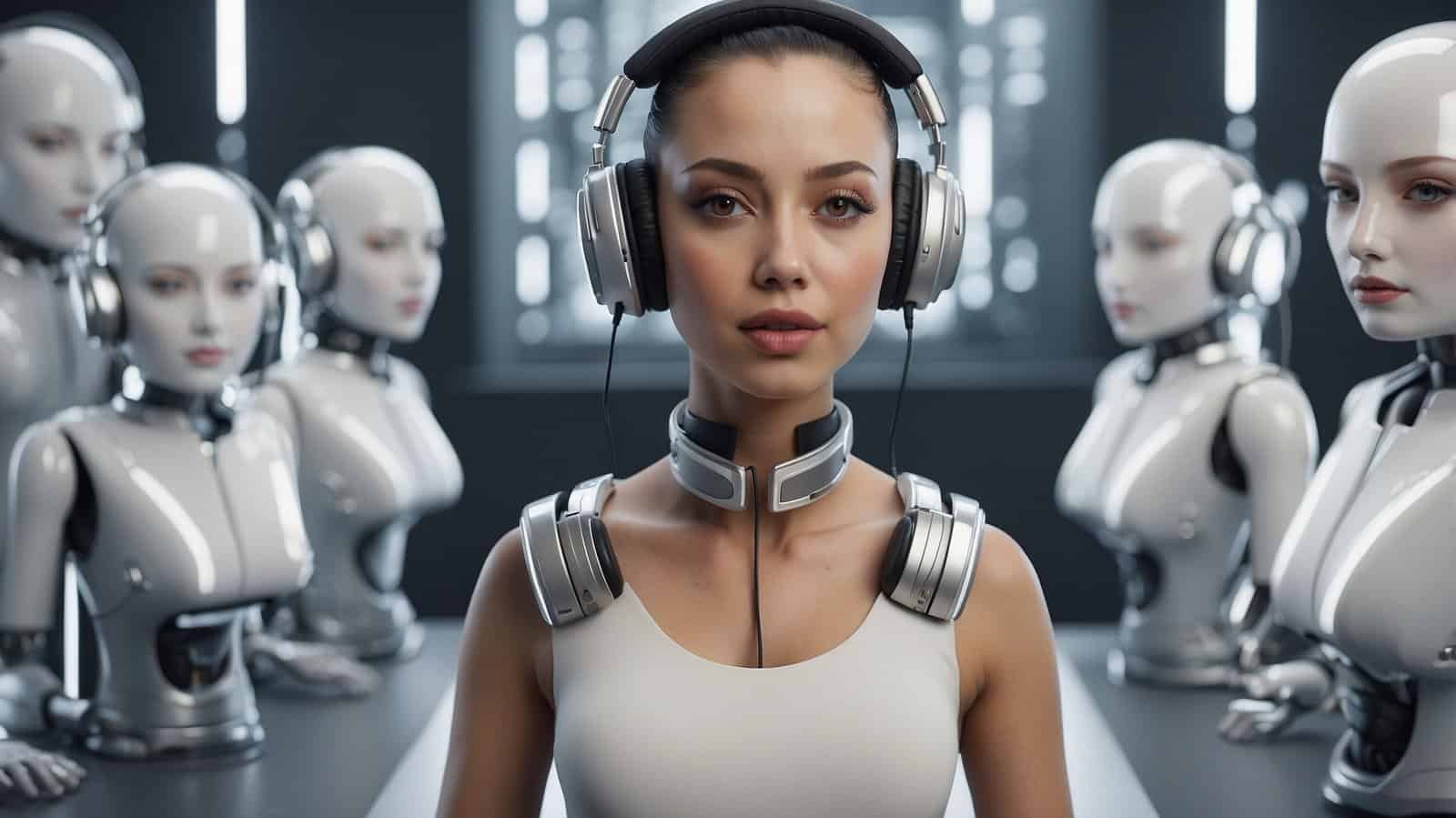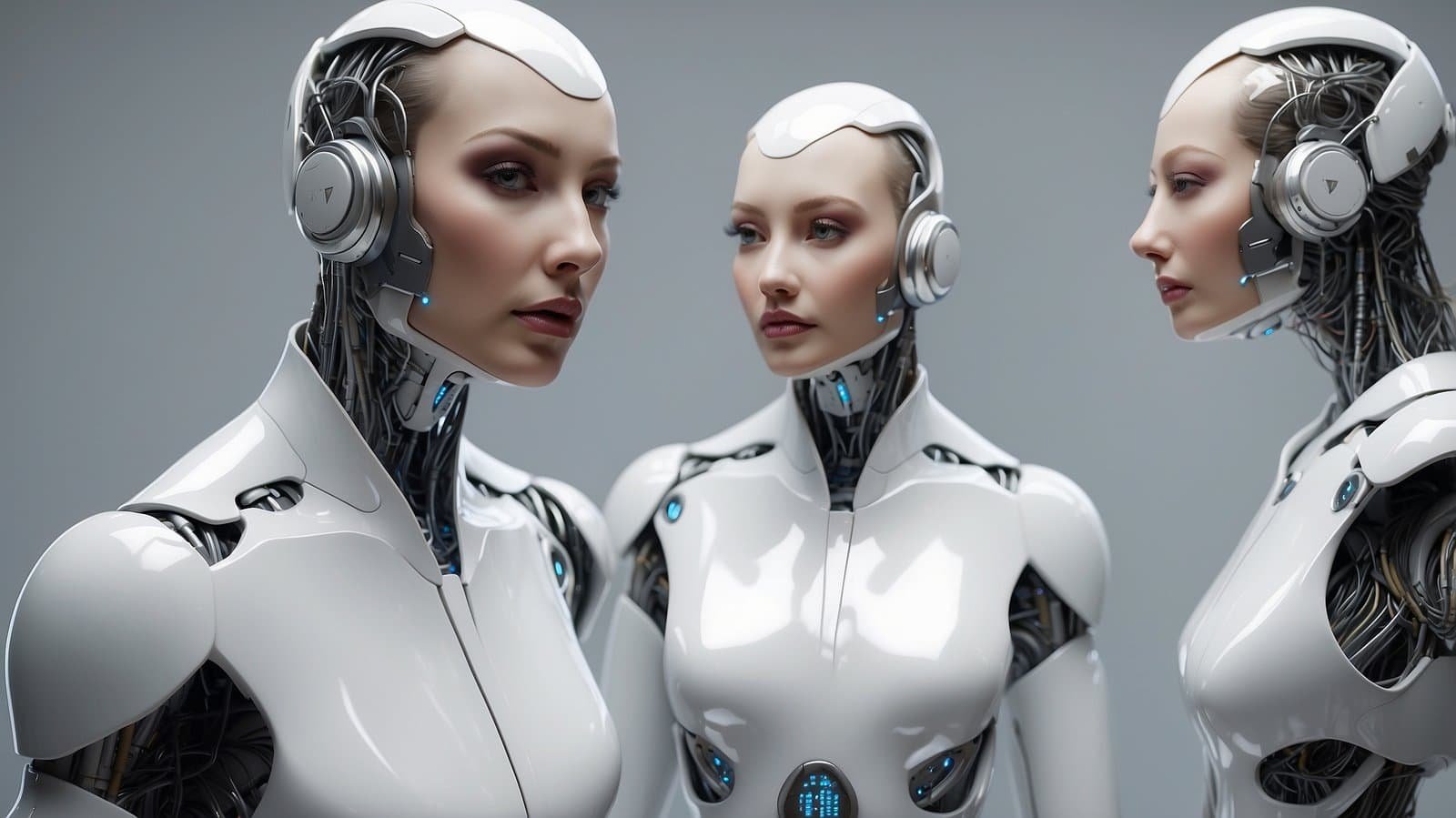AI is expanding at an unprecedented speed, unlocking countless possibilities in the ever-evolving world of technology. One of its novel advancements is AI voice cloning, which helps computers reproduce human speech with astonishing accuracy. Applications for this AI variant vary from virtual assistants to the creation of deepfakes. But what is AI voice cloning exactly? How does it work, and what are its potential implications? In this blog, I will walk you through this novel technology to answer these questions and more.
What is AI voice-cloning?
AI voice cloning, also known as digital parroting, is the process of replicating a human voice with the help of AI algorithms. It works by analyzing and processing a small sample of a person’s speech to create a voice model, which can then be used to generate new speech that sounds like the model. Since the original sample is so short, the algorithm has to try out different parameters before settling on the best fit. This is especially valuable for humans who struggle to communicate with a conventional interface.
Advances in machine learning and deep learning have refined voice-cloning technology to the point that, with only a few hours of input, you can produce a clone of a voice that is both highly accurate and sounds completely natural.
How Does AI Voice Cloning Work?
The process of AI voice cloning typically involves several key steps:
Collecting the Data: First, you need some audio recordings of the target voice. This might only be a few minutes, maybe a half hour, all the way up to multiple hours.
Preprocessing: We need to preprocess the audio before collecting the data—in particular, cleaning or denoising the data and normalizing audio levels. This ensures the AI model is still getting high-quality input.
Model Training: The machine learning algorithm (frequently, a deep neural network that is ‘pre-trained’ on another labeled dataset) is trained on the preprocessed audio, learning to identify certain characteristics of the target speaker’s voice, such as whether it is high or low pitched, how it is inflected or cadenced, and so on.
Voice Synthesis: When the model is trained and ready, it takes human-sounding speech and modifies it so it sounds like our target actor. To do this, it converts text input into robot-sounding speech.
Post-Processing: once the speech has been generated, it may undergo human-sounding post-processing or other effects, or be interwoven into specific applications.

Applications of AI Voice Cloning
Personalized Virtual Assistants
But arguably the most popular AI voice-cloning application today is the one in personalized virtual assistants in projects like the continued experimentation with Google Assistant, Amazon Alexa, and Apple Siri. You might find it possible to select the voice of your virtual assistant today. It could be someone you know—like your child, your sister, or even your spouse—or even a celebrity with a voice you’d love to have every time you speak to your phone.
Entertainment and Media
In the realm of entertainment, AI voice-cloning can create content without the original actors by recreating the voice of a deceased actor by machine learning or creating new lines for a video game. We may see the culturization of media messages through the generation of virtual influencers—human-looking creations that exist purely in the digital space—or as digital avatars of familiar characters who can interact with you in real time.
Accessibility and Assistive Technology
AI voice-cloning technology could potentially help many people with disabilities communicate. For instance, one could synthesize a customized voice in a unique style that is recognizable to others and perfectly preserved after the original voice was lost from illness or injury.
Marketing and Advertising
The latest thing marketers are doing—cloning a celebrity endorser or a brand ambassador’s voice with artificial intelligence (AI) voice cloning—for personalized marketing is built on a similar principle. With this cloning technique, companies can be at the service of different audience segments and bring a whole new level of personalization to ad and seasonal greeting campaigns. Targeted and customer-specific marketing of this kind has the potential to significantly increase conversion rates and boost brand loyalty.

Ethical Considerations and Risks
Yes, while the potential benefits to humans of tech like AI voice cloning are many (as noted above), there are also important ethical concerns and risks to be mindful of, including uses of AI voice cloning for fraud, identity theft, and deepfake scams that can enable these behaviors. It’s high time for the ethical alarms to start going off.
Consent and Privacy
Firstly, even though voice cloning is a type of AI, the ethical concern above is primarily a question of consent—that is, whether there is consent and permission involved before someone else makes an audio clip that clones a person’s voice without their permission. It is a potentially serious breach of privacy and an encroachment on an individual’s rights if you clone someone’s voice without their consent.
Deepfake Scams
This is also true of deepfake-style voice cloning, which allows fraudsters to spread false media attributed to public figures. The effects could be just as disastrous for public trust, security, and the free exchange of power and information. If on-demand voice-cloning AI becomes more accessible, the potential for deep-fake scams will need to be addressed, countered by detection tools and legal prophylactics.
Intellectual Property Rights
The second is intellectual property rights law. Could cloning someone’s voice infringe on their intellectual property? If we understand voices to be intellectual property, sure.’
How to Get Started with AI Voice Cloning
Interested in creating your own AI voice clone? Here are some of the tools and platforms worth looking into:
Resemble AI: Clone your own voice. All it takes is a few minutes of audio. Completely free. All the AI writing tools mentioned above are in their early phases, and their quality varies. There are still some exaggerated examples, and not all the tools produce flawless text. But do those two things really matter? Instead of focusing on whether AI-generated text is better than human-written text or vice versa, let’s shift our perspective. An interesting critique of all these AI writing tools could be to ask whether there are tasks for which we should not use them. In what areas of life do we not want software to replace our input? This could form the basis of a productive debate.
Lyrebird: The Descript company created this voice-cloning technology, which is available to programmers of chatbots and podcasts.
iSpeech is a platform that offers text-to-speech and voice-cloning services for both personal and commercial applications.
As for the tool you pick, bear in mind practical concerns such as ease of use, quality of output, options for deployment, and customization. Additionally, make sure that the text your AI-generated clone is reading is appropriate for consumption, not defamatory, unrelated to kidnapping, and free of spoilers for a crucial episode of your friend’s favorite Star Wars series.

The Future of AI Voice Cloning
The future of AI voice cloning is an exciting (and somewhat uneasy) one where, as technology continues to develop, we can expect a broader spectrum of more lifelike and multifarious voice clones that could be used across a wide variety of audio manipulations. Along with those advances comes an understanding that we’re going to have to up our level of responsibility to get it right. To navigate this evolving landscape, developers and users alike must prioritize ethics and consent in their practices. Emphasizing transparency and accountability will be crucial in distinguishing between genuine and cloned voices, especially in sensitive contexts. By implementing these winning tactics for voice cloning, we can help ensure that this technology serves as a beneficial tool rather than a source of misinformation or manipulation. As we navigate this evolving landscape, addressing the ethical considerations surrounding AI voice cloning challenges becomes paramount. Ensuring that we respect privacy, consent, and authenticity will be critical in building public trust. Ultimately, the balance between innovation and responsibility will determine how effectively we can harness the potential of this powerful technology. As we navigate this evolving landscape, the implementation of longterm voice cloning techniques will play a crucial role in ensuring authenticity and ethical usage. It’s essential for developers and users alike to establish guidelines that prioritize consent and preserve individuality. Only then can the full potential of voice cloning be harnessed responsibly, fostering innovation while safeguarding against misuse.
Advancements in Voice Quality
With more powerful AI models, voice-cloning will only get better as time goes on. Real-time voice-cloning requiring low training data might be a possibility with better supercomputers. The difficult challenges we are solving are creating possibilities that just a few years ago seemed very unlikely.
New Use Cases
It seems certain that we’ll encounter a multitude of new and innovative use cases for AI voice cloning, from interactive storytelling to personalized learning experiences and even more immersive forms of virtual reality where people can interact with AI personas that sound like real human beings.
Regulation and Oversight
It’s probably only a matter of time before we see agitation for regulation and oversight that would put a handle on this kind of innovation, with limits and rules that governments, industry organizations, and the companies involved will have to build together in the coming years. This could involve mechanisms to exert control over who can borrow which actor’s voice and for what purposes.
Conclusion: Embracing the Potential of AI Voice Cloning
In the trending AI voice cloning movement, there’s a huge market to be tapped, no matter what you might be selling, creating, or marketing. It’s worth your time to learn more.
To keep up with the ethics of voice cloning technology, but also just general awareness of the potential threats, use it when you can be a positive force, but also be creative and innovative with it to expand the possibilities of what you can do to connect with audiences in ways that take home a message for the future.

